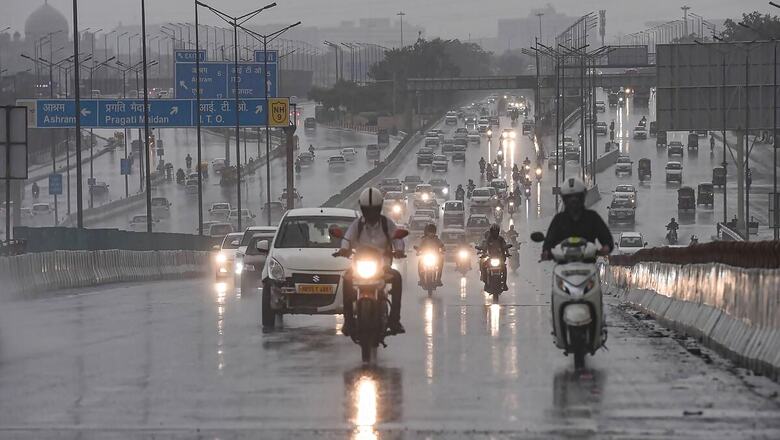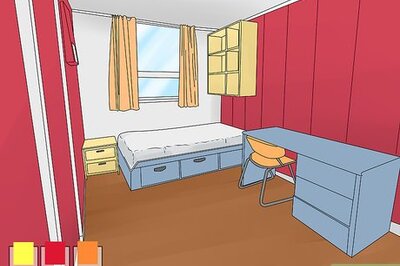
views
At least 74 people were killed by lightning strikes in Rajasthan, Madhya Pradesh and Uttar Pradesh. According to the Indian Metrology Department, you can stay safe during lightning by taking the following precautions. Here’s how.
Precautions for Outdoor
Check the weather forecast before participating in outdoor activities. If the forecast predicts thunderstorms, postpone your trip or activity.
When there’s thunder, go to a safe shelter immediately and avoid being among metal structures and constructions with metal sheeting. Safe shelters include pukka homes, pukka buildings, or hard top vehicles with the windows rolled up.
Remember the 30/30 Lightning Safety Rule: Go indoors if, after seeing lightning, you cannot count to 30 before hearing thunder. Stay indoors for 30 minutes after hearing the last clap of thunder
Avoid open fields, the top of a hill or a ridge top.
Stay away from tall, isolated trees or other tall objects. If you are in a forest, stay near a lower stand of trees.
If you are in a group, spread out to avoid the current travelling between group members.
If you are camping in an open area, set up camp in a valley, ravine or other low areas. Remember, a tent offers NO protection from lightning.
Stay away from water, wet items, such as ropes, and metal objects, such as fences and poles. Water and metal do not attract lightning but they are excellent conductors of electricity. The current from a lightning flash will easily travel for long distances.
Precautions for Indoor
Avoid contact with water during a thunderstorm. Do NOT bathe, shower, wash dishes, or have any other contact with water during a thunderstorm. Lightning can travel through plumbing.
Avoid using electronic equipment of all types. Lightning can travel through electrical systems and radio and television reception systems.
Avoid using corded phones. Corded phones are NOT safe to use during a thunderstorm. However, cordless or cellular phones are safe to use during a storm.
Avoid concrete floors and walls. Do NOT lie on concrete floors during a thunderstorm. Also, avoid leaning on concrete walls. Lightning can travel through any metal wires or bars in concrete walls or flooring.
Stay off corded phones. You can use cellular or cordless phones.
Don’t touch electrical equipment such as computers, TVs, or cords. You can use remote controls for safety.
Avoid plumbing. Do not wash your hands, take a shower or wash dishes.
Stay away from exterior windows and doors that might contain metal components leading from outside your home to the inside.
Stay off balconies, porches and out of open garages or carports.
Do not lie on concrete floors or lean against concrete walls.
Protect pets: Dog houses are not safe shelters. Dogs that are chained to trees or on metal runners are particularly vulnerable to lightning strikes.
Protect your property: Lightning generates electric surges that can damage electronic equipment some distance from the actual strike. Typical surge protectors will not protect equipment from a lightning strike. Do not unplug equipment during a thunderstorm as there is a risk you could be struck.
Read all the Latest News, Breaking News and Coronavirus News here.


















Comments
0 comment